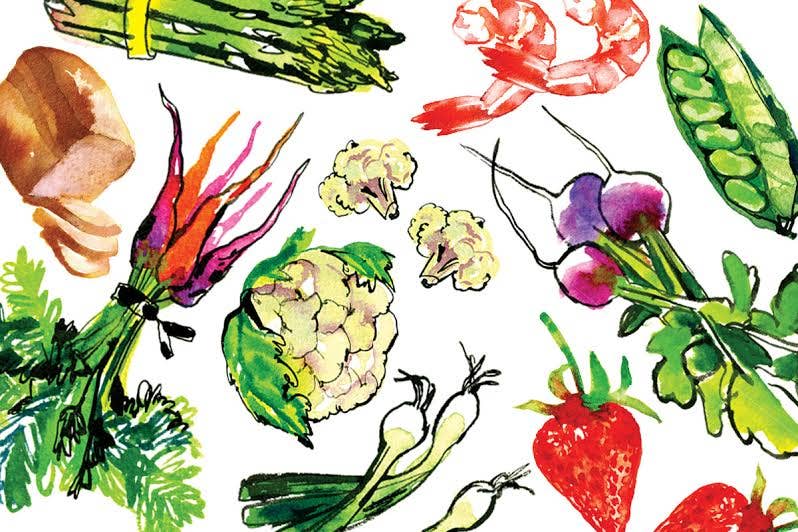
Tomatoes and Tripe
London is the best restaurant town in the universe, and blah blah blah blah. Okay. The assiduous diner can indeed eat very well in the British capital today—and can certainly, even when the food lags behind its reputation a little, have great fun in the process. But London's famous chefs offer as much silly food as anyone, and far too many of them are better at being celebrities than at being cooks.
Two of the city's best chefs (and restaurateurs)—both well known and highly rated but neither exactly what you'd call trendy—are notable most of all for the steady confidence with which they do cook, and for their obvious distaste (expressed on their menus, not on the telly or in newspaper columns) for culinary silliness. It's tempting to see these two—Sally Clarke of Clarke's and Fergus Henderson of St. John, both of whom have just published their first cookbooks—as polar opposites, the light and dark, or feminine and masculine, of contemporary British cooking. Clarke, who worked at California restaurants (including the seminal Michael's in Santa Monica) and who proudly names Alice Waters (who wrote the foreword for her book) as an inspiration, is often described as a proponent of "California cuisine"—and indeed, she serves a single, ever-changing Waters-style menu nightly, grills much of her food, and is particularly noted for her salads and vegetable dishes. Henderson, whose restaurant occupies an old smokehouse near London's famed Smithfield meat market, is principally noted for his fearless use of organ meats.
A quick flip through the volumes at hand—the eponymous Sally Clarke's Book _and Henderson's _Nose to Tail Eating—might support this view. Gloriously photographed by Martin Brigdale, Clarke's book is seasonal, fresh, bright—a treasury full of smart, mostly simple, invariably attractive dishes like parsley soup with morel mushrooms and creme fraiche; salad of buffalo mozzarella with grapes, capers, and olives; and poached guinea fowl with winter vegetables, herbed lentils, and salsa verde. Henderson, meanwhile, proposes jellied tripe, crispy pigs' tails, and pheasant and pigs'-trotter pie with suet crust—and illustrates these and other preparations with grainy, shot-from-above multi-dish images, by Jason Lowe, that have their own murky beauty. And the tone of the recipes is distinctly different in both books. Clarke sounds young, optimistic, and enthusiastic when she writes that "[a]t Clarke's we are lucky to have access to gardeners in the southeast who grow and pick salad ingredients specially for us and then deliver them daily to our door." Henderson sounds almost Calvinistic when he notes that "'Nose to Tail Eating' means it would be disingenuous to the animal not to make the most of the whole beast," and New Ageish when he counsels making the filling for the suet-crust pie a day in advance so that it may "find itself".
Upon closer inspection, however, the two chefs turn out to have more than a few things in common: Both celebrate raw materials and respect their imperatives, for instance, whether that means waiting until July to add tomatoes to the menu, as Clarke does, or honoring, a la Henderson, the ancient process of "rendering, cooking, and preserving in fat, which produces tender, flavoursome meat which keeps, improving with age, and could not be more versatile in its gastronomic possibilities." Both also give clear, detailed instructions, neither condescending nor imperious, for concocting the various dishes they include. And though you won't find Clarke singing the praises of lambs' brains on toast (which Henderson does), or, for that matter, Henderson telling you how to make a salad of mussels with tomatoes and samphire (one of Clarke's autumn recipes), there is plenty of hearty fare in _Sally Clarke's Book _(e.g., slow-baked duck leg with onion "marmalade" and duck-fat roasted potatoes), and Clarke herself could have made Henderson's salad of grilled jerusalem artichoke, red onion, and olives, or his leek, potato, and oyster soup. Whatever their similarities or points of difference may be, in any case, Clarke and Henderson represent the best of contemporary, tradition-informed British cooking—in these books as in their restaurants.
Keep Reading
Continue to Next Story










